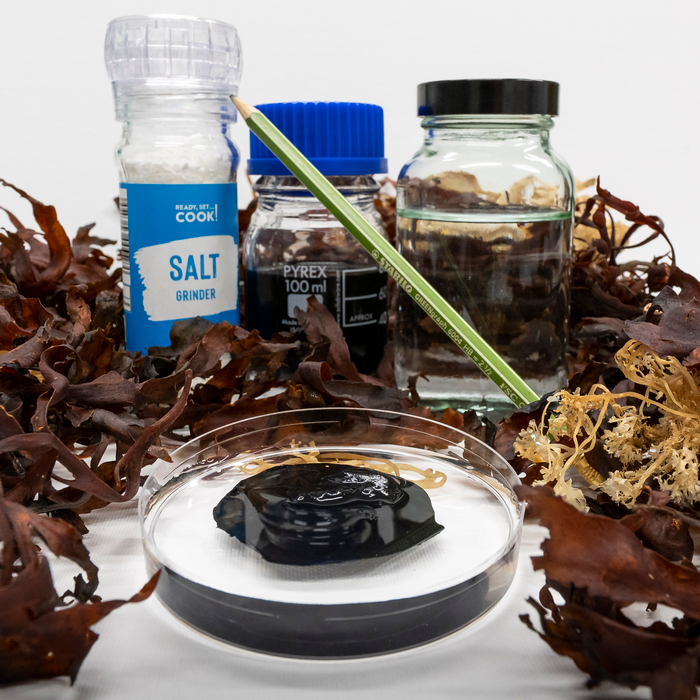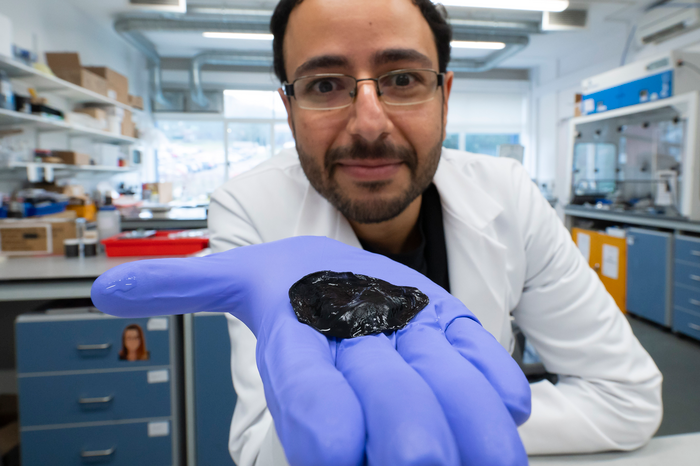We speak with Dr. Conor Boland about his involvement in new research describing the development of a sustainable, sensitive sensor utilizing an algae seaweed graphene-based hydrogel. We discuss the current landscape for sustainable sensing materials, the role graphene played in this device, and the different applications where this sensor could be used.
Please could you introduce yourself and your current research activities?
I am Dr. Conor Boland, a Lecturer in Materials Physics at the University of Sussex. My research group investigates the sustainable production and application of nanomaterials.
How did you become involved in this field of research?
The Irish Times published an article in 2008 during the first year of my undergraduate called “How thin can you go” about a researcher named Jonathan Coleman who made graphene from pencil lead. I was inspired to do a summer internship to learn more; each summer, I returned for an internship, which turned into a Ph.D. position, and the rest is history.

L to R- Salt used in work in salt shaker, graphene solution, flask of water. Middle - normal pencil (to illustrate graphene in development) Front - graphene/seaweed hydrogel in water in petri dish. Image Credit: University of Sussex.
Could you describe the current landscape of sustainable and biodegradable sensor systems?
In general, sustainable research is something that is currently coming to the forefront as the climate crisis worsens. There is a need for an all-encompassing approach to reduce its effects and research, much like any other economic sector, needs to follow suit. Generally, researchers are looking to create new sustainable materials to create these sensing materials. However, our work at the University of Sussex shows that the materials can be found in nature at a greatly reduced cost.
Why do algae present such an exciting material for sensing technologies?
Algae offers a material that has the exciting combination of being naturally sourced and already commercially produced, meaning the cost of algae and seaweed based products will be greatly reduced. Furthermore, these materials offer a substitute that supersedes commonly used unsustainable materials in sensing applications.
Are there any major performance differences between organic materials like algae and conventionally used inorganic materials? If so, how could these differences be overcome?
The algae seaweed work that my group at the University of Sussex presents are materials that will biodegrade into edible products. The sensors we make from the algae are, in fact, common food products processed using just water. In comparison, inorganic materials like PDMS require toxic solvents to be processed and cannot be recycled, meaning that potential devices made from PDMS in the future could end up in landfills.

Researcher Adel Aljarid holding the flexible graphene seaweed hydrogel developed at the University of Sussex, England. Image Credit: University of Sussex.
Could you discuss the newly developed biodegradable algae-based hydrogel and its health and fitness monitoring applications?
The sustainable sensors we have made at the University of Sussex are very soft and present extremely large sensitivities, the exact combination of properties required to make an effective health sensor. I believe that the work my group has done lays the groundwork for future developments based on seaweed products to meet the need for accessible and affordable real-time health diagnostic tools for home and hospital care.
What role did graphene play in developing this system? Did its use offer any benefits to the technology?
Graphene plays an extremely important role in facilitating the fantastic properties we see with our materials. Seaweed by itself is an insulator and does not conduct electricity, but by impeding a network of graphene nanosheets into the seaweed’s structure, it turns the materials into an electrical conductor.
When we then deform the seaweed/graphene materials, the nanosheets in the graphene network diverge, causing a change in electrical resistance. It is this change in resistance that we use to describe different bodily functions. My group in the past has presented an array of mathematical models to control the properties of nano-networks in sensing materials which created a blueprint that we applied in the seaweed work we discuss now.
The work on our seaweed sensors has very much been a labor of love at the University of Sussex over the last few years, as we realised that these models could lead to more sustainable sensors, a hallmark of Sussex research.

Dr. Conor Boland and Adel Aljarid discuss their seaweed-based health sensor development in the lab at the University of Sussex. Image Credit: University of Sussex.
How does this development compare to existing research?
To the best of our knowledge, my group’s seaweed/graphene hydrogels are the most sensitive hydrogel sensing material to date. Our work also presents materials that are softer than any previously demonstrated sensing material.
What are the next steps for this investigation? Are there any limitations that prevent the widespread use of this sensor technology?
We hope that we can work towards making our seaweed-based electronic devices smaller and more discrete to facilitate the creation of very thin electronic skins that can measure key health indicators, like pulse and blood pressure. I think with seaweed electronics’ cheap cost of production, biodegradable nature, and high performances, we have at the University of Sussex a technology that can lead to true societal impact.
How hopeful are you about a future predominantly composed of environmentally sustainable technologies?
I am very hopeful, as my group’s work shows that these technologies can exist and that they do work as intended. But the need for this change to sustainable research is now; there is no doubt about that. Sir Harry Kroto, through his now well-known Chemsitry at Sussex cover art, wanted to convey that the discovery of the fullerene was a torch lite by the University of Sussex to signify a policy change in research. This change was the rise of nanoscience, a field I now find myself in.
I believe that through the sustainable research done, mine and many other groups at the University of Sussex can hopefully find ourselves leading the way again but this time towards environmentally conscious research.
About Dr. Conor S. Boland
 Dr. Conor S. Boland received his Ph.D. degree from the School of Physics at Trinity College Dublin (TCD) in 2016. That same year he joined the Advanced Materials and BioEngineering Research (AMBER) Centre at TCD as a commercialisation research fellow. In 2019, he joined the School of Mathematical and Physical Sciences at the University of Sussex as a Lecturer in Materials Physics. His research focuses on material discovery and applying nanomaterials in novel nanocomposites for electromechanical and energy applications.
Dr. Conor S. Boland received his Ph.D. degree from the School of Physics at Trinity College Dublin (TCD) in 2016. That same year he joined the Advanced Materials and BioEngineering Research (AMBER) Centre at TCD as a commercialisation research fellow. In 2019, he joined the School of Mathematical and Physical Sciences at the University of Sussex as a Lecturer in Materials Physics. His research focuses on material discovery and applying nanomaterials in novel nanocomposites for electromechanical and energy applications.
Disclaimer: The views expressed here are those of the interviewee and do not necessarily represent the views of AZoM.com Limited (T/A) AZoNetwork, the owner and operator of this website. This disclaimer forms part of the Terms and Conditions of use of this website.